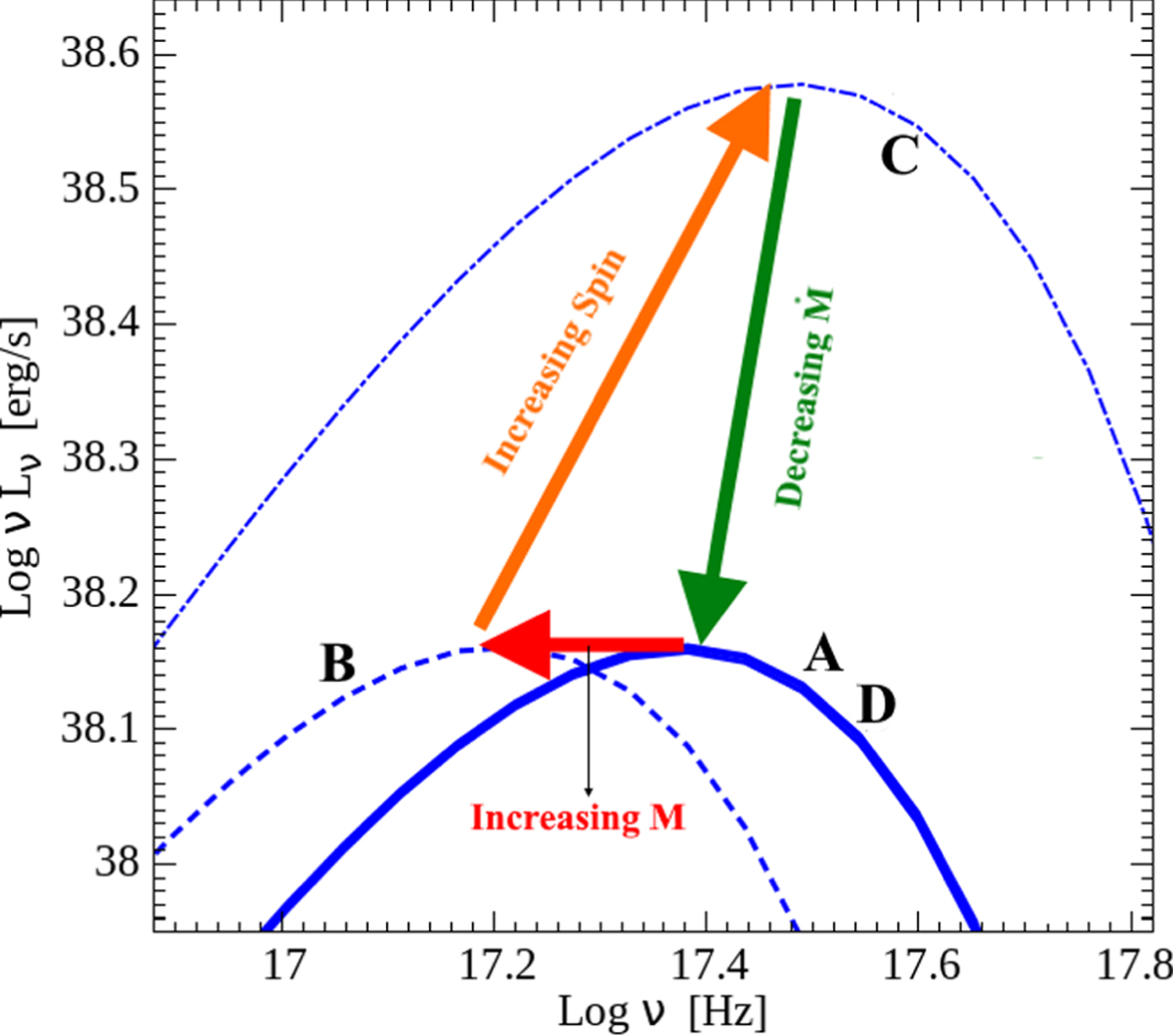Fig. 5

Emission peak of the KERRBB spectrum in the same position for different values of the black hole mass M, accretion rate Ṁ and spin a which shows that there is a family of solutions. Consider spectrum A (thick solid blue line): if M increases at constant Ṁ and spin, spectrum B is obtained. Now, if the spin increases, but M and Ṁ are constant, spectrum C is obtained because a larger spin corresponds to a larger efficiency. Finally, if Ṁ decreases, spectrum D is obtained, which is almost exactly equal to the initial spectrum A (they differ slightly in the high-frequency, exponential part).
Current usage metrics show cumulative count of Article Views (full-text article views including HTML views, PDF and ePub downloads, according to the available data) and Abstracts Views on Vision4Press platform.
Data correspond to usage on the plateform after 2015. The current usage metrics is available 48-96 hours after online publication and is updated daily on week days.
Initial download of the metrics may take a while.


